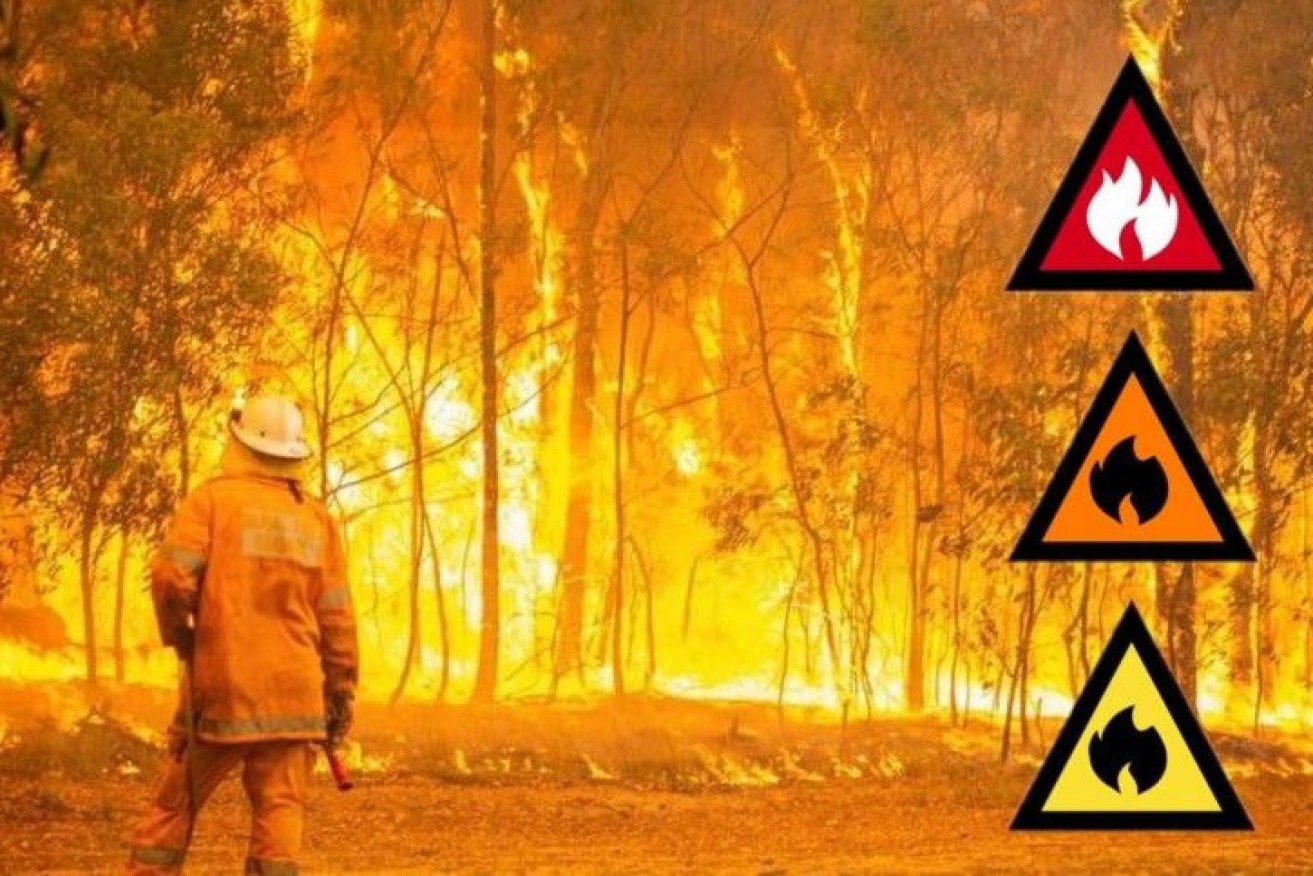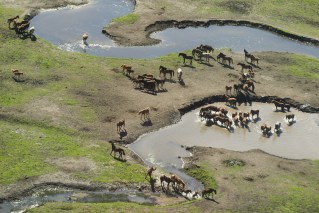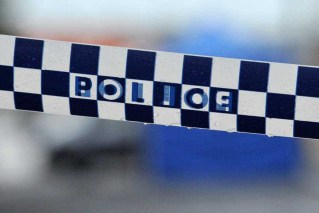Emergency warnings for bushfires, floods and cyclones about to get clearer

The parching north wind soaring temperatures have evoked fears of a repeat of last summer infernos. Photo: ABC News
The rollout of Australia’s new bushfire warning system, which will be consistent across the country and provide clearer advice about how people should respond, begins on Tuesday.
The Australian Warning System will also bring flood, storm, cyclone and heatwave warnings into line with those used for bushfires, with the same three alert levels across all states and territories.
It has been developed by a working group at the Australasian Fire and Emergency Service Authorities Council (AFAC).
“Community members will be able to see something, immediately identify what it means, and what they need to do,” Anthony Clark, the group’s chairman, said.

The three new icons introduced by emergency agencies. Photo: ABC/AFAC
“We know that’s really important when lives are on the line and properties are being threatened.”
Earlier this year, the bushfire royal commission heard evidence of confusion over differences between state-based bushfire warnings and recommended the creation of a national system.
Three new icons will represent each of the alert levels: Advice, Watch and Act, and Emergency Warning.
All three of those terms are already used nationally for bushfires, but it will be the first time they are applied to storms, floods, cyclones and heatwaves.
The executive director of the Australian Institute for Disaster Resilience, Amanda Leck, who also oversees AFAC’s warnings group, said the changes were strongly backed up by research.
“It found that the community supported a three-level warning system,” she said.
“They thought it should be a simple system, which they could understand, and that it should be also supported by a specific call to action that would help people to know what to do during an emergency.”
‘Call to action’ to become part of warnings
Most states and territories make the warning level prominent and include instructions about what to do in the body of the warning.
“There’s a bit of danger in some ways of us looking at a [warning] level … in isolation,” Mr Clark said.

The fire warning systems that were previously being used across Australia. Source:ABC/Royal commission into natural disaster arrangements
“There’s information [in a warning] that backs that up and provides information to people about what to do, and what we’re talking about is elevating it to that higher level … so the advice becomes a lot clearer and people don’t need to go digging for it.”
In practice, that meant a warning might carry a heading like “Watch and Act – Prepare to leave”, or “Emergency Warning – Leave now”, whether for a bushfire, flood or other hazard.
While there were questions raised about the ambiguity of the term Watch and Act during the bushfire royal commission, Mr Clark said extensive research proved it worked.
“Overwhelmingly, the community has come back and said Watch and Act is actually a term that works well … when it’s got that action statement applied to it,” he said.
Almost 16,000 people were involved in the research that led to the creation of the new system.
“[It] shows that 75 per cent of people would take action with the call to action and the level name included,” Ms Leck said.
The new system will be rolled out for bushfires on December 1 in all jurisdictions except Western Australia and the Northern Territory, which will adopt it in the near future.
It will be slowly phased in for other hazards across the country.








